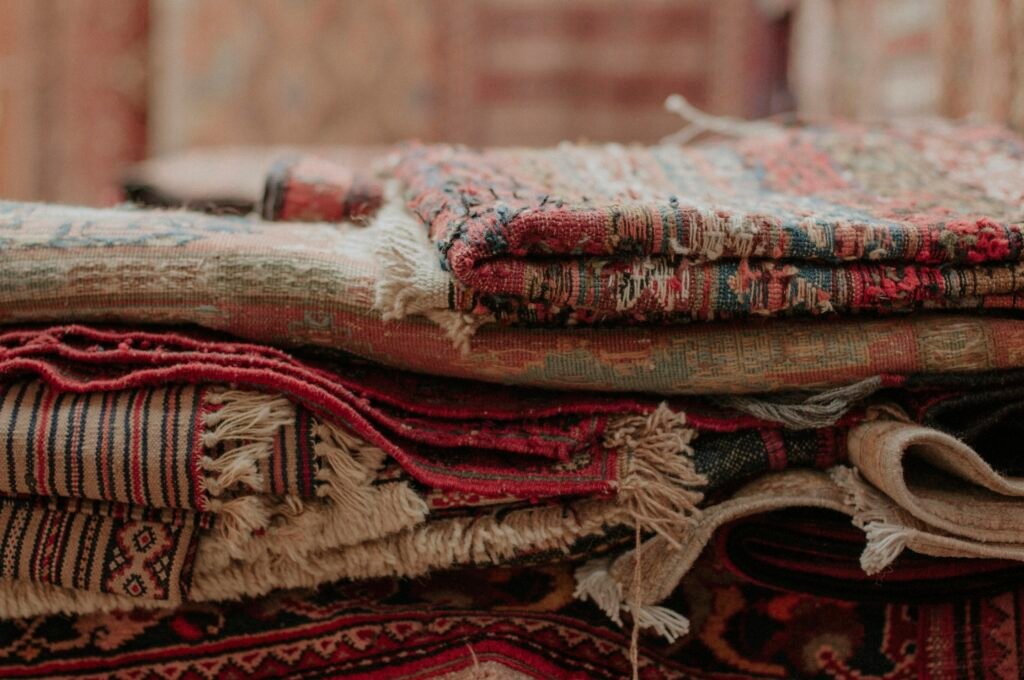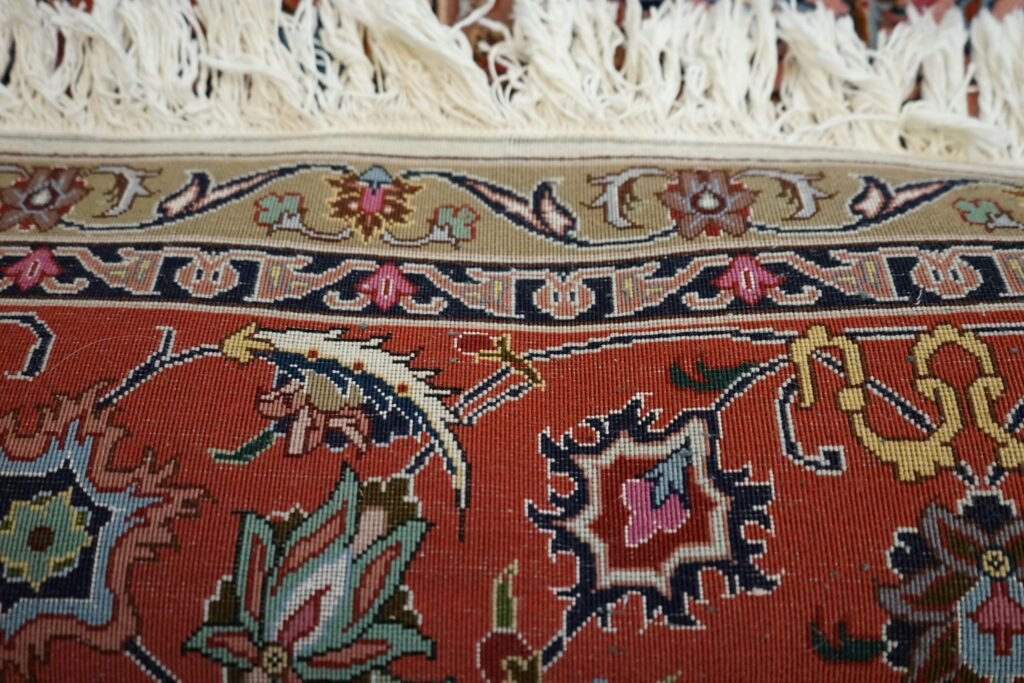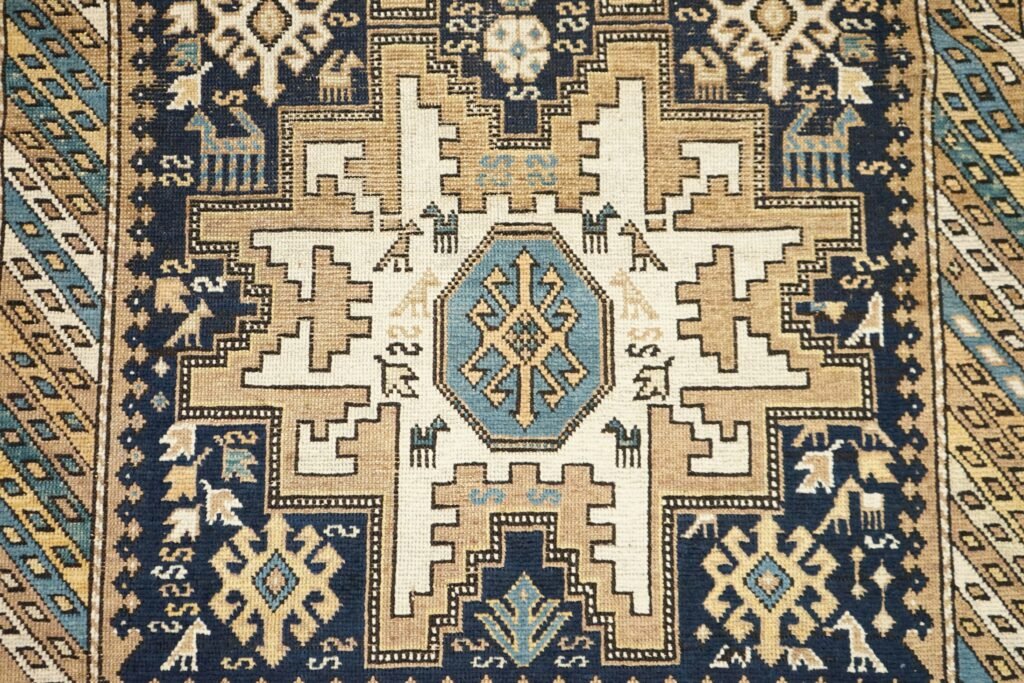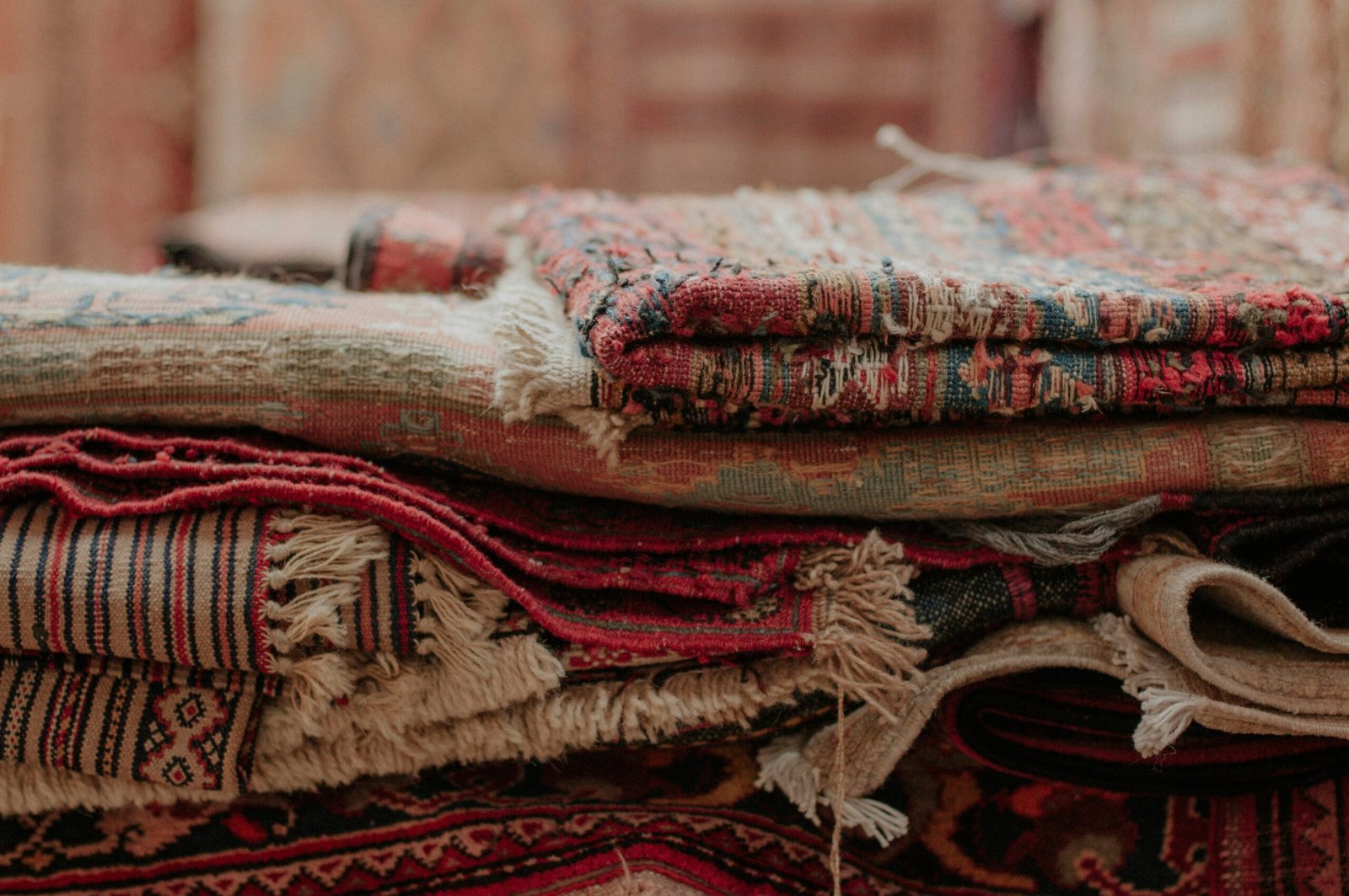Not sure which rug size will make your living room look balanced and feel comfortable?

How Do I Choose The Right Rug Size For My Living Room?
Choosing the right rug size can change how your living room looks, how it feels underfoot, and how your furniture relates to the space. This guide walks you through measuring, placement options, style choices, practical concerns, and common pitfalls so you can pick a rug that fits both your room and your lifestyle.
Why rug size matters
Rug size affects visual balance, traffic flow, and the functionality of furniture groupings. The right rug anchors seating areas, prevents pieces from floating awkwardly, and helps define zones in an open-plan layout.
Measure Your Space First
Measuring accurately is the first step to choosing a rug that fits your living room properly. Without measurements, you risk buying something too small or overwhelming for the room.
Tools you’ll need
You’ll want a tape measure, a piece of painter’s tape or masking tape to mark corners, and a notepad or phone to record measurements. A laser distance measurer can speed things up if you have one.
How to measure your living room
Measure the full length and width of the room from wall to wall. Note any alcoves, bay windows, or irregular shapes. Measure the dimensions of your main furniture pieces: sofa length, coffee table size, armchair footprint, and the distance between seating and walls. These numbers will guide which rug sizes will work.
Standard Rug Sizes and What They Mean
Rugs come in common sizes that most manufacturers use. Knowing these helps you visualize which will fit your space and furniture.
- 4′ x 6′ (1.2m x 1.8m): Small seating areas, accent rugs
- 5′ x 7′ (1.5m x 2.1m): Small living rooms, under a small coffee table
- 6′ x 9′ (1.8m x 2.7m): Standard for medium rooms, works under small sofas
- 8′ x 10′ (2.4m x 3.0m): Very common — anchors most living rooms
- 9′ x 12′ (2.7m x 3.7m): Good for larger rooms or when you want all furniture on the rug
- 10′ x 14′ (3.0m x 4.3m) and larger: Grand rooms or open-plan areas
These sizes are a starting point—room shape, furniture layout, and desired look will determine the best option.
Furniture Placement Options
How you want your furniture positioned on the rug will affect which size you choose. Each approach creates a different visual outcome.
All furniture on the rug
This creates a unified seating area and works well in larger rooms. The rug should be large enough that all front legs (or all legs) of sofas and chairs sit on it. This typically requires an 8′ x 10′ or larger, depending on the room.
Front legs on the rug
A common and flexible option where the front legs of sofas and chairs rest on the rug while the back legs stay off. This anchors furniture without needing an oversized rug and suits medium-sized rooms.
Only coffee table on the rug
This is the minimal approach and can work in casual or eclectic spaces. A smaller rug that just sits under the coffee table keeps the focus low but can make the seating arrangement feel less cohesive.
No rug under furniture
Some choose rugs for visual contrast or to protect floors rather than furniture placement. A runner or small accent rug can still complement the room even if furniture isn’t on it.
Recommended Rug Sizes by Room and Layout
This table helps you match common room sizes and seating layouts to rug sizes. Use it as a guideline, adjusting for furniture proportions and your preferred style.
| Living Room Size (ft) | Typical Layout | Recommended Rug Size(s) |
|---|---|---|
| 10 x 12 | Small seating group | 5′ x 7′ or 6′ x 9′ (front legs on rug or coffee table only) |
| 12 x 14 | Standard living room | 8′ x 10′ (front legs on rug) or 9′ x 12′ (all furniture on rug) |
| 14 x 18 | Large living room | 9′ x 12′ (all furniture on rug) or 10′ x 14′ (if space allows) |
| 18 x 20+ | Great room/open plan | 10′ x 14′ or larger, or use multiple rugs to define zones |
| Irregular / L-shape | Zoned seating areas | Use a 6′ x 9′ for reading nook + 9′ x 12′ for main seating |
These are guidelines — always measure your room and furniture before buying.
How Much Bare Floor Should You Leave?
Leaving a border of exposed floor around the rug visually frames the area. Standard recommendations:
- Small rooms: 18 inches of floor visible all around creates a balanced look.
- Medium rooms: 24 inches is common and feels proportional.
- Large rooms: 30 inches or more can maintain scale and prevent the rug from looking tiny.
If you want a more open, airy feel, show more floor. For a cozy, grounded look, go with less exposed floor.
Rug Shape: Which Works Best?
Rugs come in different shapes that influence the flow of a room.
Rectangular rugs
Best for standard seating areas and long rooms. Most sofas and coffee tables align well on rectangles.
Square rugs
Work in square rooms or under square furniture groupings. They can create a formal, balanced look.
Round rugs
Great for conversation nooks, beneath round tables, or to soften angular furniture. Use a round rug under a circular coffee table to reinforce shape.
Runner rugs
Perfect for narrow hallways, behind sofas, or to create pathways in open-plan spaces.
Table: Rug shapes and best applications
| Shape | Best for | Visual effect |
|---|---|---|
| Rectangular | Living rooms, dining rooms | Structured, classic |
| Square | Small square rooms, seating groups | Balanced, formal |
| Round | Conversation areas, round tables | Softens lines, focal point |
| Runner | Hallways, behind furniture | Directional, elongated look |
Choose a shape that complements both your furniture layout and the room’s architectural features.
Material, Pile, and Construction: What to Pick
The material and construction affect durability, comfort, and appearance. Consider traffic, pets, spills, and how much maintenance you’ll tolerate.
Natural fibers
- Wool: Durable, resilient, and naturally stain-resistant. Feels luxurious and traps fewer allergens. More expensive but often worth it.
- Cotton: Affordable and easy to clean but wears faster. Works well for casual areas.
- Jute/Sisal: Natural, textured look; good for casual or coastal styles. Not great for high-moisture areas and can be rough underfoot.
Synthetic fibers
- Nylon: Durable and stain-resistant; great for high-traffic areas.
- Polypropylene (olefin): Highly stain-resistant and budget-friendly, though it may look less luxurious.
- Polyester: Soft and colorfast, good for low-traffic spaces.
Construction and pile
- Low pile / flatweave: Easier to clean and better under furniture legs; good for high traffic.
- Medium pile: Offers comfort and some texture; a versatile choice.
- High pile / shag: Very cozy but harder to vacuum and keep under furniture; better for low-traffic or adult-only rooms.
Table: Common materials — pros and cons
| Material | Pros | Cons |
|---|---|---|
| Wool | Durable, stain-resistant, luxurious | Higher cost |
| Cotton | Affordable, washable | Wears faster |
| Jute/Sisal | Natural texture | Less comfortable, not moisture-friendly |
| Nylon | Durable, stain-resistant | Can be pricier |
| Polypropylene | Cheap, stain-resistant | Less luxurious feel |
| Polyester | Soft, colorfast | May flatten over time |
Pick a material that matches your lifestyle: kids and pets lean toward durable synthetics; adults seeking comfort may prefer wool.

Color, Pattern, and Visual Size Tricks
Color and pattern change how a rug reads in a space.
Light vs. dark colors
Light-colored rugs make a space feel larger and airier but show stains more easily. Dark rugs hide dirt but can make a room feel smaller or cozier depending on lighting.
Patterns and scale
Large-scale patterns suit big rooms and large rugs; small, intricate patterns work well on smaller rugs or busy rooms. Geometrics can add modern structure; florals or oriental designs bring traditional warmth.
Using rugs to alter perceived room size
- To make a room look larger: choose a light, low-contrast rug that visually extends the floor.
- To anchor a focal zone: use a contrasting rug with a bold pattern or color.
- To tie colors together: pick a rug that repeats the room’s key hues to unify disparate pieces.
Layering Rugs
Layering a smaller rug over a larger neutral rug or wall-to-wall carpet adds texture and interest. This can be useful if you want to mix patterns or protect a larger rug. Ensure the base rug extends beyond the top layer enough to create a clear border.
Layering tips
- Balance textures and patterns; a solid under-rug with a patterned top rug often works best.
- Keep top rug size proportional — typically centered and leaving at least 12–18 inches of the base rug showing.
- Use rug pads under both layers to prevent slipping and protect floors.
Rug Pads: Why They Matter
A rug pad improves safety, comfort, and longevity. It prevents slipping, protects floors from scratches, reduces wear, and gives extra cushioning. Choose a pad that fits the rug size minus about half an inch to create a small border so the pad isn’t visible.
Types of rug pads
- Felt: Comfortable and adds thickness; good for hardwood floors.
- Rubber or vinyl: Anti-slip properties; choose a non-staining option to protect your floor finish.
- Felt + rubber combo: Offers both cushion and grip; a common choice for living rooms.
Common Mistakes to Avoid
Avoid these pitfalls when choosing your rug.
- Buying a rug by eye in the store without measuring your space.
- Choosing a rug that’s too small for the furniture grouping, making pieces seem disconnected.
- Ignoring room traffic patterns — a rug that obstructs flow will frustrate you.
- Picking a pile height that interferes with doors or makes chairs unstable.
- Skipping a rug pad — slips and uneven wear become problems quickly.

Step-by-Step Rug Selection Guide
Follow these practical steps to pick the right rug for your living room.
- Measure your room and furniture. Write down sofa length, coffee table dimensions, and seating layout distances.
- Decide on placement style: all furniture on rug, front legs on rug, or coffee table only.
- Choose a rug size based on measurements and the table guidelines above.
- Select materials and pile according to traffic, pets, and cleaning preferences.
- Pick a color and pattern that complements your decor and lighting.
- Add a quality rug pad sized slightly smaller than the rug.
- Test in the room if possible — many retailers offer sample swatches or generous return policies.
- Confirm door clearance and adjust if necessary by trimming or changing rug pile.
Budgeting and Where to Buy
Rug price varies widely: machine-made synthetics can be budget-friendly, while hand-knotted wool or natural fiber rugs cost more. Set a budget range before shopping. Consider:
- Retail stores: Good for seeing rugs in person.
- Online retailers: More variety and often better prices; check return policies.
- Secondhand and vintage markets: Great for unique finds but verify condition first.
- Custom or local weavers: For specific sizes or materials, though pricier.
Remember to factor in rug pads, delivery, and possible returns.
Caring for Your Rug
Proper care extends the life of your rug and keeps it looking fresh.
- Vacuum regularly, following the manufacturer’s recommendations for pile height.
- Rotate the rug every 6–12 months to even out wear and sun exposure.
- Clean spills quickly — blot, don’t rub. For many materials, mild detergent and water will work; for wool, use a wool-safe cleaner.
- For deep cleaning, professional cleaning is often worth it for wool and delicate rugs.
- Use furniture coasters for heavy legs to prevent dents.
Pet- and Kid-Friendly Rugs
If you have pets or kids, prioritize durability and easy cleaning.
- Choose synthetic fibers like polypropylene for stain resistance.
- Look for rugs with short or low pile to minimize trapping fur and crumbs.
- Opt for patterns or darker hues to hide inevitable stains and wear.
- Use machine-washable rugs in high-spill areas if possible.
Accessibility and Safety Considerations
Ensure the rug doesn’t create tripping hazards. Use non-slip pads to keep the rug in place. Check that doorways clear the rug and that edges lie flat. If anyone in the home uses mobility aids, ensure the rug won’t impede movement.
Styling Tips Based on Sofa and Room Type
These tips help match rug size to common furniture arrangements.
Three-seater sofa (standard 84 inches)
A rug that extends at least 6–12 inches beyond each arm creates balance. An 8′ x 10′ often works for medium rooms; for larger spaces, 9′ x 12′ places all furniture on the rug.
Sectional sofas
Sectionals can be anchored with larger rugs to accommodate unusual shapes. Measure the overall footprint and choose a rug that allows front legs of the sectional to sit on it; 9′ x 12′ or 10′ x 14′ are common choices depending on the sectional size.
Small apartments or studio layouts
A 5′ x 7′ or 6′ x 9′ rug can define a seating area without overwhelming a small space. Use lighter colors and low pile to maintain flow.
Open-plan spaces
Use rugs to define zones — place one rug under the seating area and another under the dining table. Ensure there’s visible flooring between zones to maintain separation.
Visual Examples (Mental Images)
- In a 12′ x 14′ living room with a sofa and two chairs, an 8′ x 10′ rug with the front legs of all seating on the rug will feel cohesive and proportionate.
- In an 18′ x 20′ great room, a 10′ x 14′ rug centered under the seating group creates a grounded focal area while leaving a generous 2–3 feet of floor around the perimeter.
- In a narrow living room (10′ x 16′), placing a 6′ x 9′ runner-style rug centered under a slimline sofa and coffee table will visually elongate the space.
When to Get Custom Rugs
If your room has odd dimensions or you want an exact size for a specific layout, custom rugs solve the problem. Custom options allow you to choose precise dimensions, colors, and materials, but at a higher cost and longer lead time.
Returns, Samples, and Testing Rugs at Home
Many retailers let you order swatches or small sample rugs to see how color and texture work with your flooring and lighting. If ordering online, check return policies — rugs are heavy and return shipping can be costly, so confirm measurements before buying.
Final Checklist Before Buying
- Have you measured your room and furniture?
- Do you know where the rug will sit relative to furniture legs?
- Is the material suitable for your household (pets, kids, traffic)?
- Does the color and pattern work with your existing decor and lighting?
- Have you chosen a suitable rug pad?
- Can you transport and place the rug safely?
- Do you have a return plan if the rug doesn’t look right?
Frequently Asked Questions
How small is too small for a living room rug?
If the rug only fits the coffee table and leaves seating floating without any legs on the rug, it’s usually too small. Aim to at least have front legs on the rug to create cohesion.
Can I place a rug over carpet?
Yes — layering a rug over carpet can create interest, but make sure the carpet is sturdy and the rug has a non-slip pad to prevent shifting. In some rental situations, layered rugs can help define zones.
What about rug maintenance for wool vs. synthetic?
Wool resists stains and is durable but needs specific cleaning methods; synthetics are easier to clean with common household products. Both benefit from regular vacuuming and prompt attention to spills.
Do rugs shrink when cleaned?
Natural fiber rugs can shrink if cleaned improperly. Professional cleaning or following manufacturer care instructions reduces this risk.
Is it okay to buy a patterned rug if my sofa is patterned too?
Mix patterns by varying scale. If the sofa has a large, bold pattern, pick a rug with a smaller or subtler pattern, and vice versa. Balance with neutral accessories.
Closing Thoughts
Choosing the right rug size blends practical measurement with personal style decisions. By taking accurate measurements, deciding how furniture will sit on the rug, selecting a material suited to your household, and testing colors or samples in your room, you’ll find a rug that ties your living room together and enhances comfort. Use the tables and step-by-step guide here to make a confident choice, and remember that small adjustments — like adding a pad or rotating the rug — can extend its lifespan and keep your space looking great.
